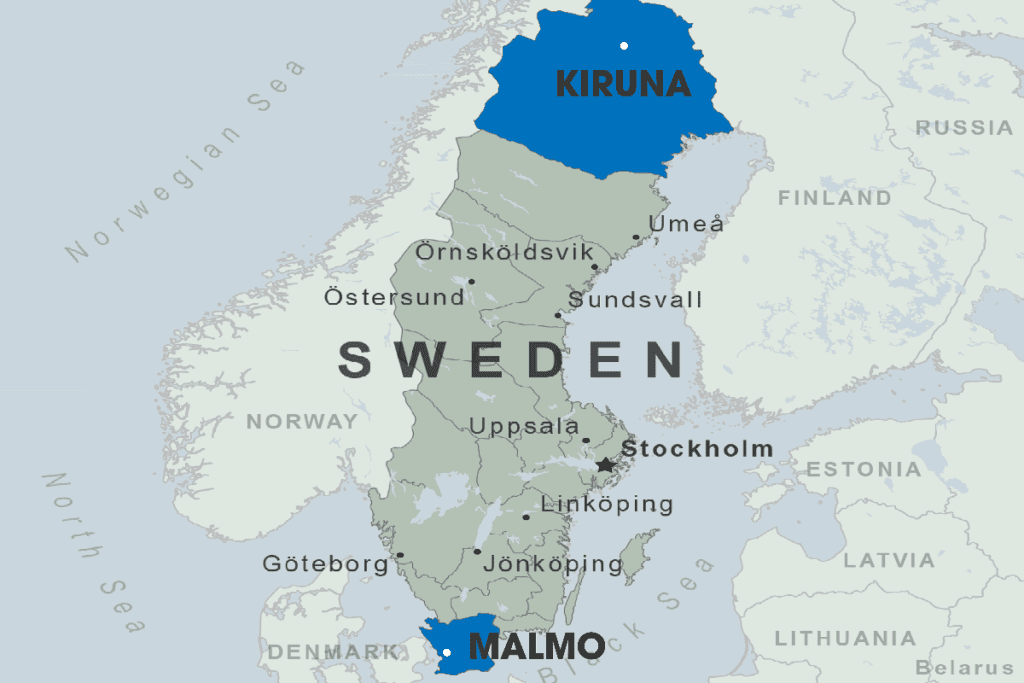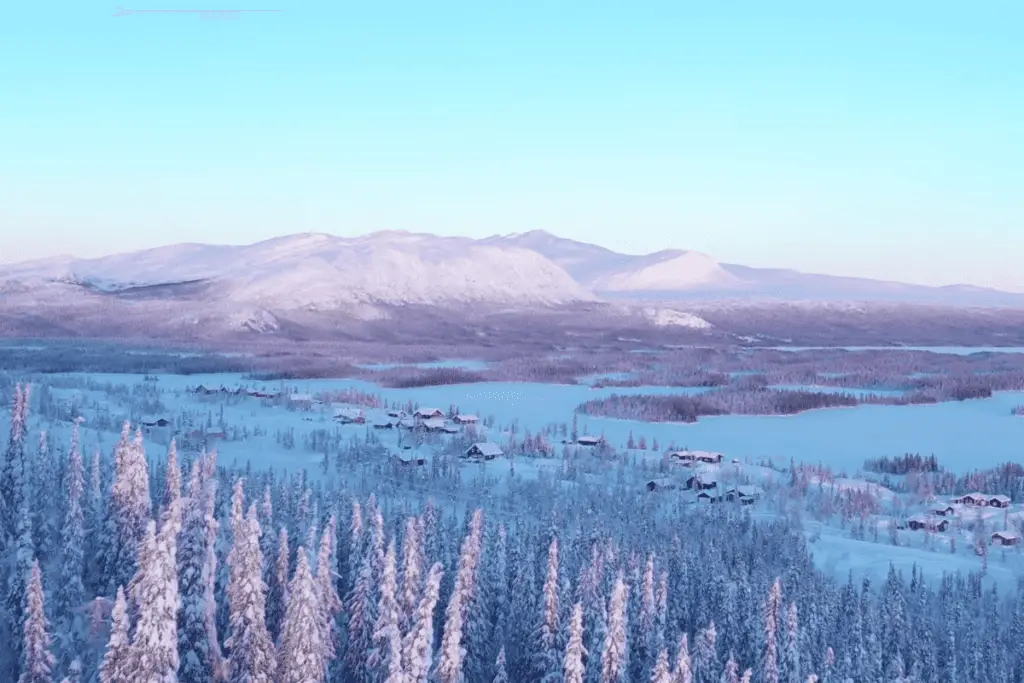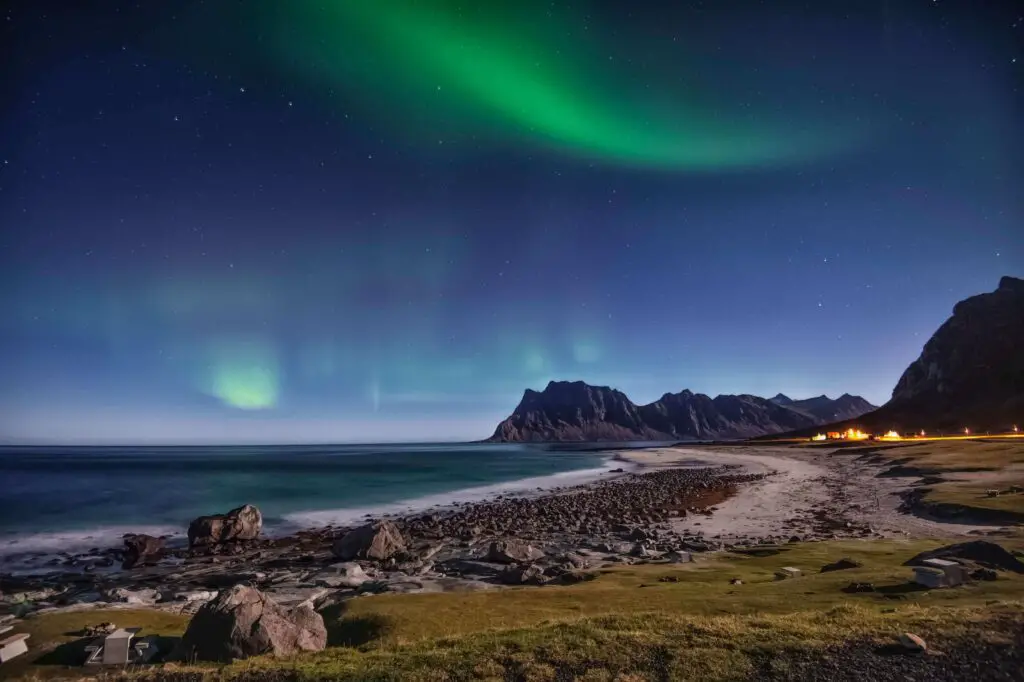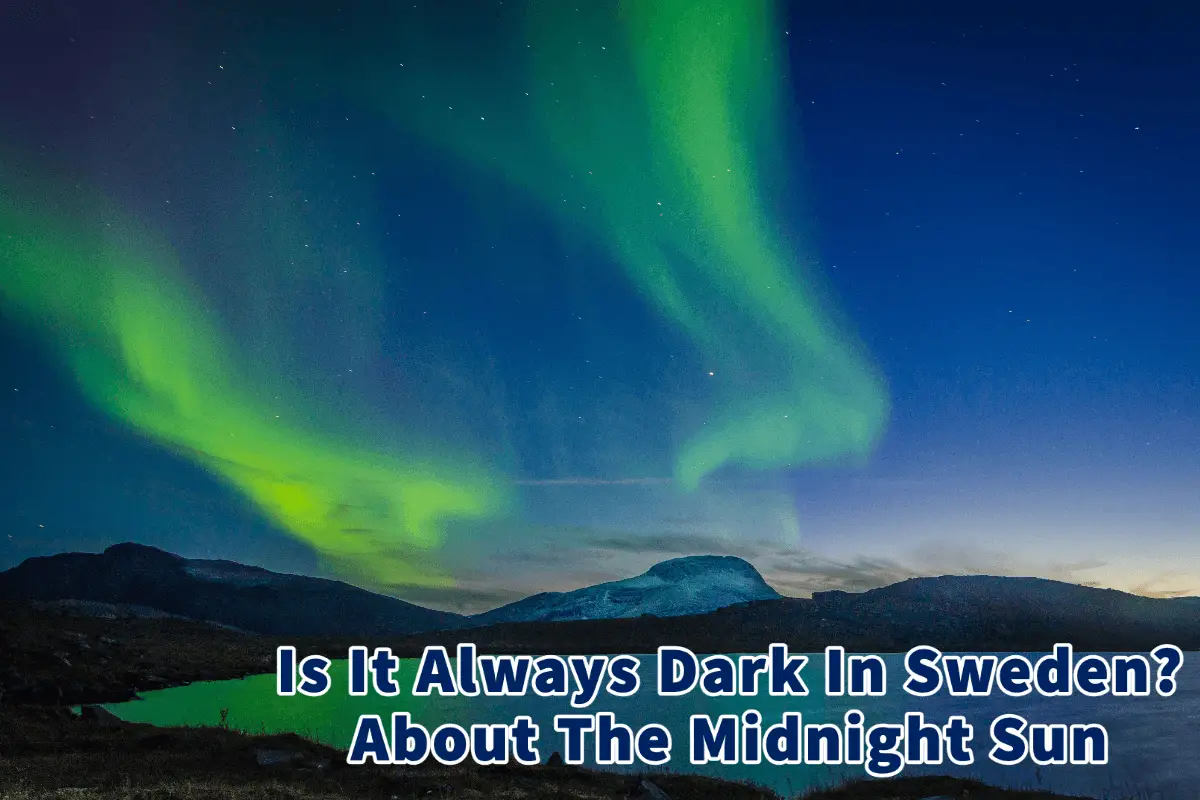The magical thing about living or visiting Sweden is how different the sunlight and darkness can be between the winter and summer months. The summer months can become a magical time when it is light all the time, whereas in the winter months, you will; you are usually encased in darkness.
It is not always dark in Sweden; it is only dark in winter. Southern Sweden and Northern Sweden can have a very different amount of darkness in the winter. Some parts of northern Sweden do not see any light for many months during winter. Southern Sweden will have more sunlight than northern Sweden in the winter month.
Table of Contents
- Sweden And Darkness During The Winter
- Sweden And the Midnight Sun
- Why Does Sweden Have The Dark Winters And Sun-Filled Summers?
- Related Questions
Sweden And Darkness During The Winter
When I went to high school in Sundsvall, Sweden, it would be dark before I left for school in the morning. It was still dark when I came home from school in the afternoon. We had a few hours of sunlight during the daytime, but it was mostly dark.
Sweden is a very long country that stretches from the south near Denmark to the very north near the Arctic circle. The amount of darkness and the weather in Sweden can differ between the north and the south.

For example, on December 22nd in Kiruna, Sweden, the sun does not rise. This does not mean that it’s completely dark, but it does mean that you will see a bit of twilight during the daytime. When it snows, it does help it seem to be a bit lighter during the darker winter months.
Kiruna, Sweden, is located 140 kilometers or 50 miles north of the arctic circle. It is the northernmost city in Sweden.
On the other hand, Malmo, Sweden is located in southern Sweden and just across Denmark. Today, driving across the Oresund Bridge to Denmark is 25 miles between Malmo and Copenhagen.
On December 22nd in Malmo, Sweden, the sun will rise at about 8:30 am and set at 3:30 pm. Malmo has much more light on the same day of the year than Kiruna, Sweden.
Not all of Sweden is always dark, and the darkness only happens during the colder winter months.
Sweden And the Midnight Sun
Just as Sweden has some parts in the wintertime when the sun never rises, there are also parts of Sweden where the sun never sets during the summertime. This phenomenon is known as the midnight sun.
For example, in the same city of Kiruna on June 21st, the sun will not go down at all, and Kiruna will have sunlight for 24 hours. On June 21st in Malmo, Sweden, the southern city in Sweden, the sun will rise at about 4:30 am and go down again at about 10 pm.
During the summer, the northern part of Sweden will have sun all day, and the central and southern parts will have about 16 to 22 hours of sun per day.
Why Does Sweden Have The Dark Winters And Sun-Filled Summers?
Sweden has the midnight sun because the earth’s axis tilts towards the sun in the summer and away from the sun in the winter. Therefore, the North or South Pole poles are exposed to sun rays for six months.
Because of the earth’s axis tilting, northern Sweden will have the midnight sun from about March 21st to September 21st. At the North Pole and some of the Arctic Circle area, the sun will be visible 24 hours a day for some of these days.
Midnight Sun In Sweden

As the earth moves around its axis and tilts towards the sun, the days will gradually get longer and longer; this is known as the midnight sun. The best time to go to northern Sweden to experience and see the full effect of the midnight sun is from about the end of May to mid-July.
In Sweden, even after midnight, you can get in a full round of golf at the golf course or be outside at night without worrying about losing daylight.
The midnight sun is unique to Sweden and affects Norway, Finland, Northern Russia, Alaska, Greenland, and Canada.
Northern Lights In Sweden

Because of the same phenomenon with the earth’s axis tilting, you can also see some of the northern lights in Sweden. The lights of the north usually occur in northern Sweden, Norway, Iceland, Finland, and Greenland. The north lights phenomenon usually takes place from September 22nd to March 20th.
But unlike the midnight sun, where you can go to Northern Sweden during June and July, and you will be able to experience the midnight sun, the northern lights only happen when certain conditions of nature come together. It is not sure that you can see the lights of the north.
The ideal conditions for the northern lights are when it’s cold and dark outside, the activities in the north light become very high. The sky must be clear to see the northern lights, and they usually happen on freezing nights.
Also, if you are trying to see the northern lights when there is a full moon, it becomes quite difficult as the full moon makes it too light in the sky. Sometimes, the northern lights may only blur briefly, and other times, you can enjoy spectacular views that can last for several hours. But one of the best times to see the northern lights is before midnight.
Being able to see the northern lights is a matter of luck. No set forecast or formula can ensure you will see the lights of the north at a specific time or place. Theoretically, you could see the northern lights all year round, but it is much easier to see them in the darker winter months because you have the darkness of the winter sky.
So even though northern Sweden can be completely dark during the winter months, some light can be seen, known as the northern lights.
At A Bus On A Dusty Road, we talk about everything about travel, life, and ex-pat living. We are all about “Living Life As A Global Citizen.” We explore social, cultural, and economic issues and travel.
We would love to have you be part of our community. Sign up for our newsletter to keep up-to-date by clicking here. If you have any questions, you can contact me, Anita, by clicking here.
Listen to our Podcast called Dusty Roads. You can find it on all major podcast platforms. Try out listening to one of our podcasts by clicking here.
Subscribe to our A Bus On A Dusty Road YouTube Channel filled with great videos and information by clicking here.
Related Questions
Lapland Or Sapmi – In Norway, Sweden, Finland, And Russia
The Sami are indigenous people who live in northern parts of Norway, Sweden, Finland, and Russia, known as Lapland or Sapmi. Most Sami people live in Norway and Sweden, some in Northern Finland and a few in Russia.
By clicking here, you can discover Lapland Or Sapmi – In Norway, Sweden, Finland, And Russia.
Norway, Denmark, And Sweden Celebrate Christmas On December 24th.
Norway, Denmark, and Sweden celebrate Christmas on December 24th because Christmas day was permanently reserved as a holy day. The Scandinavians also celebrate on the eve of a sacred day and not on the holy day itself. Many Scandinavians would attend a church service mass on Christmas morning.
By clicking here, you can discover more by reading our blog Norway, Denmark, And Sweden Celebrate Christmas On December 24th.



One response to “Is It Always Dark In Sweden? About The Midnight Sun”
Thanks for sharing. I read many of your blog posts, cool, your blog is very good. https://www.binance.info/ph/join?ref=W0BCQMF1